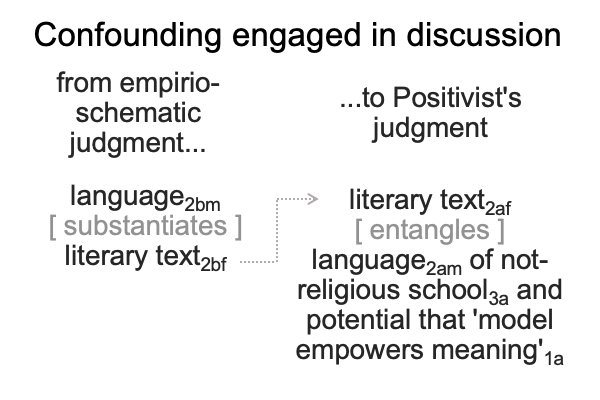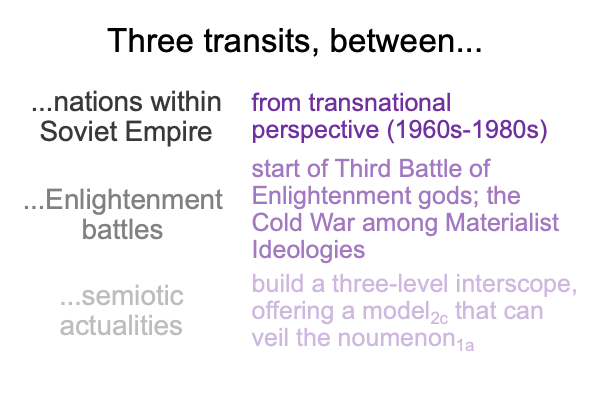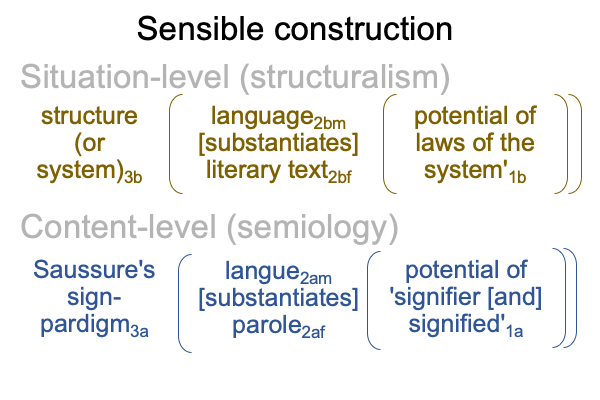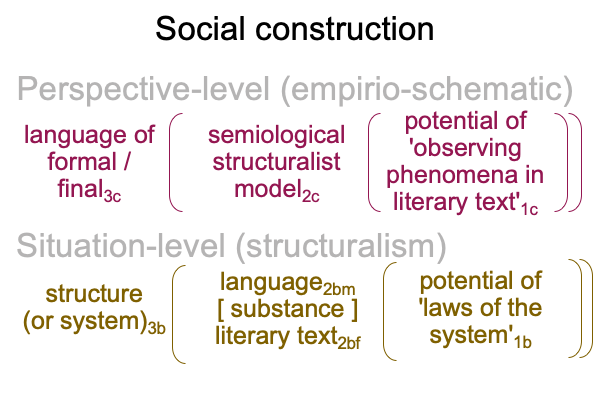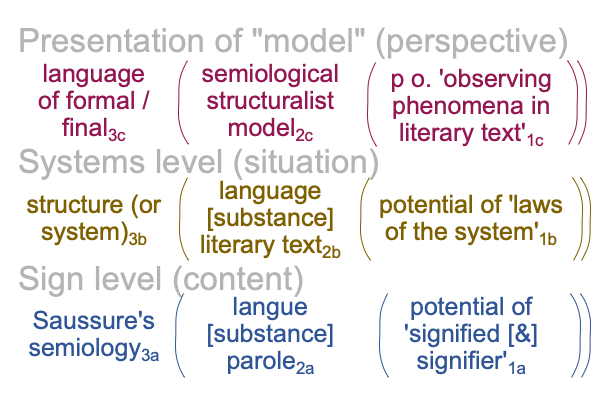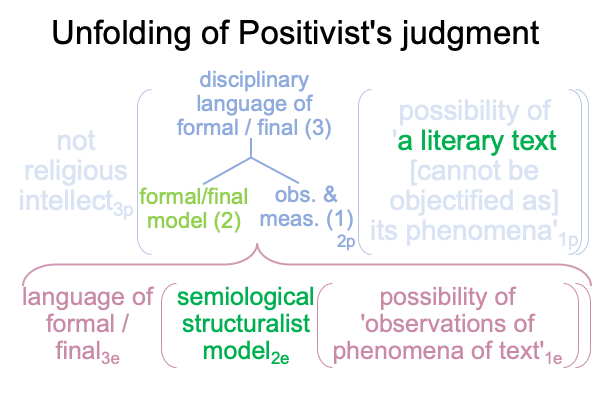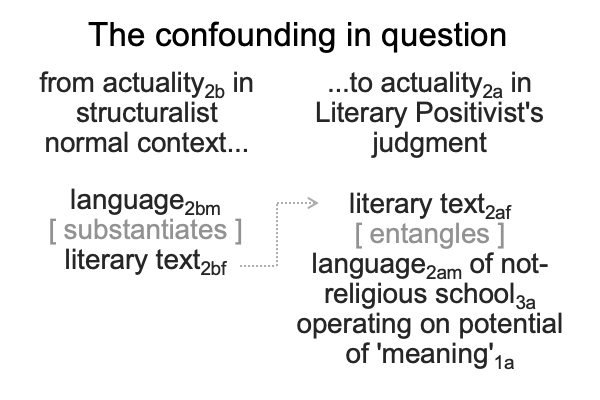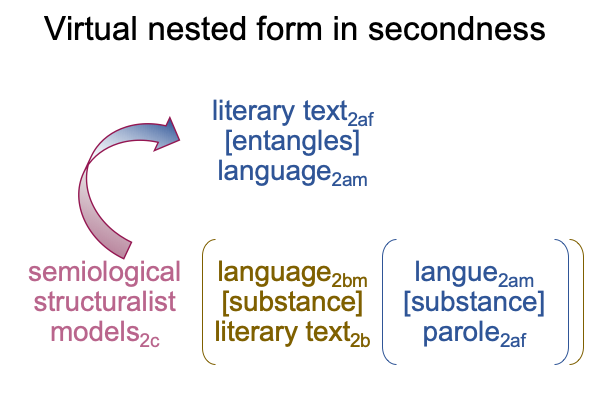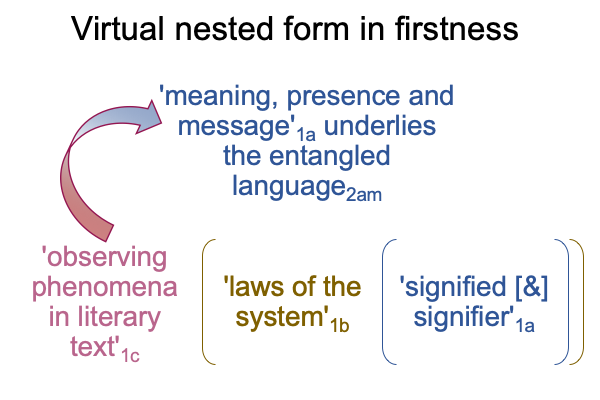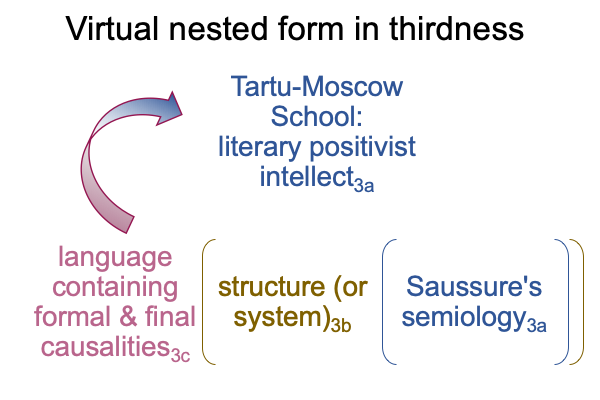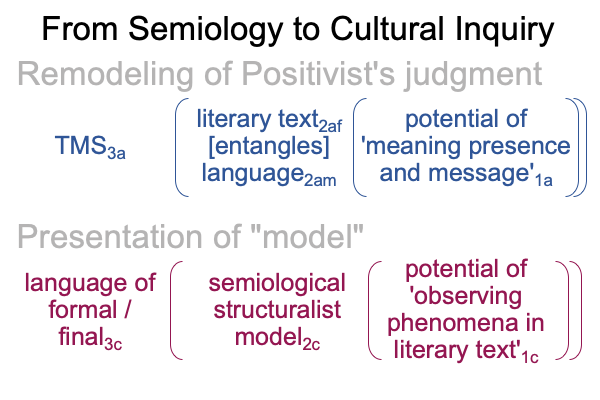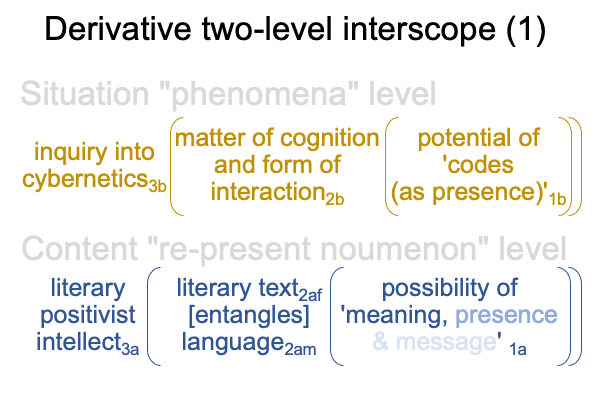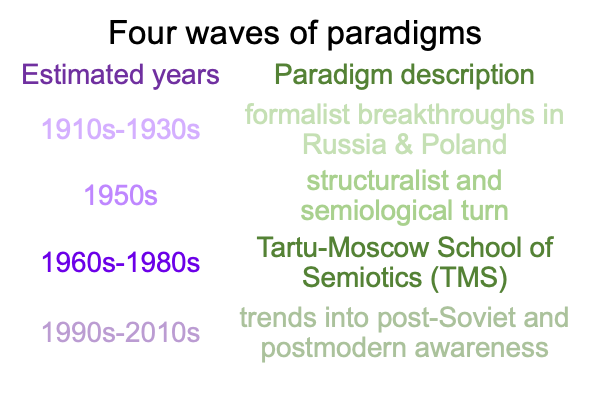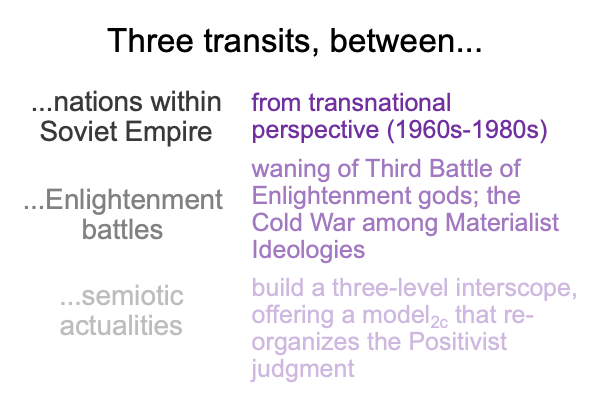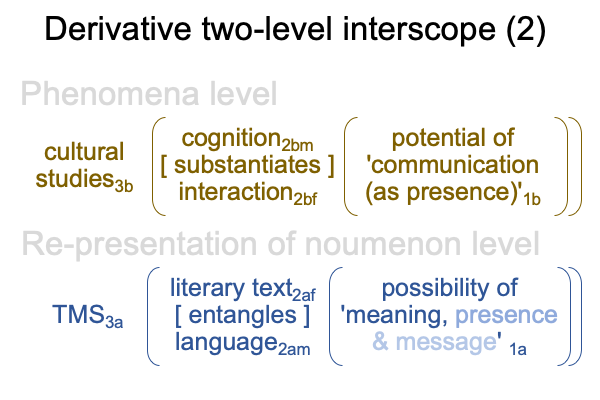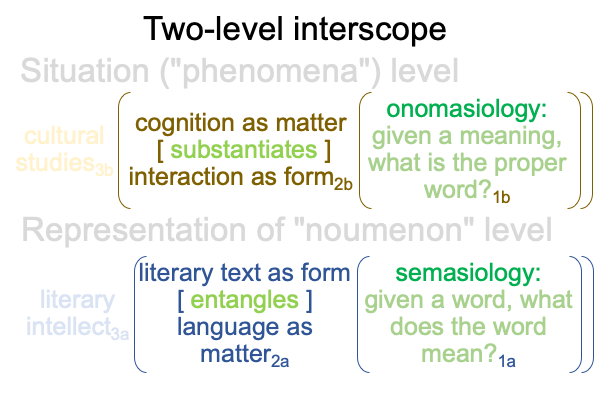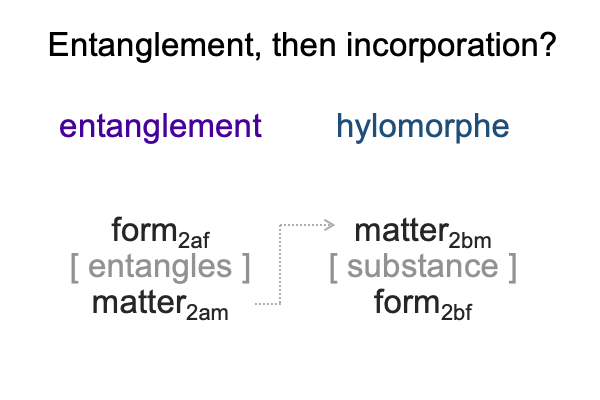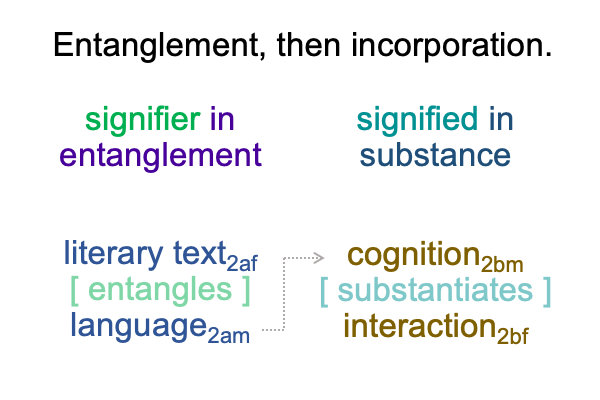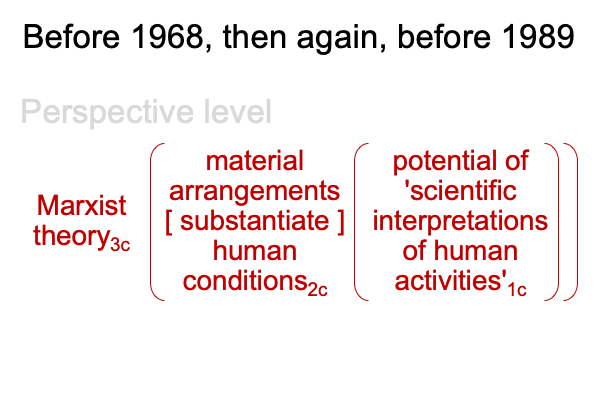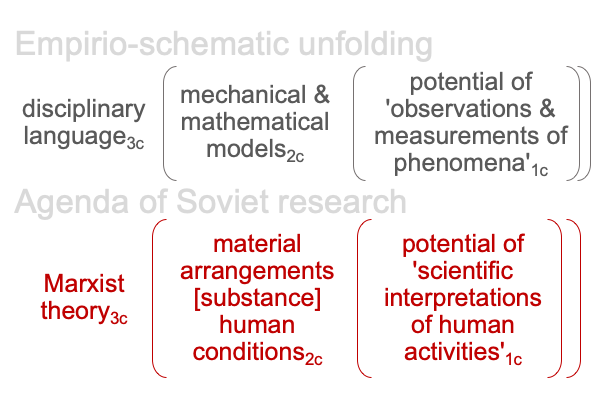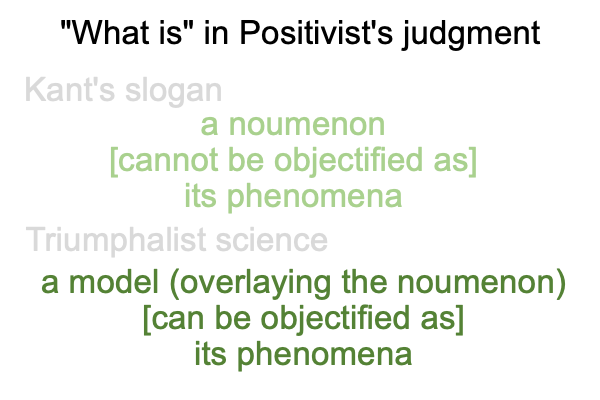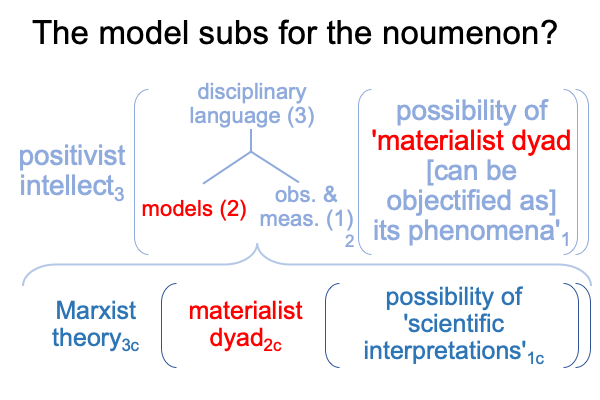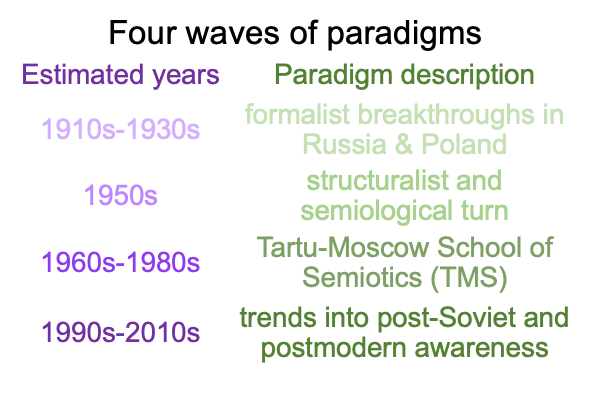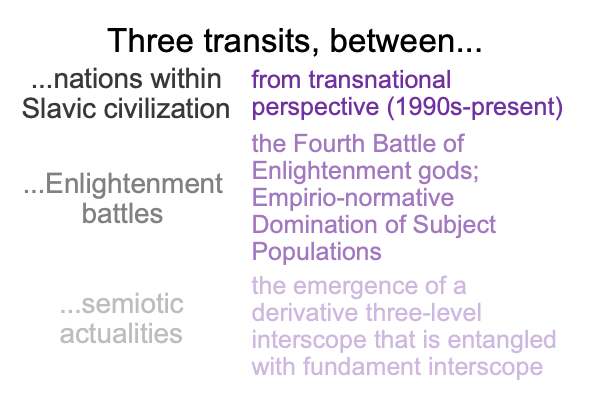Looking at Igor Pilshchikov and Mikhail Trunin’s Article (2016) “The Tartu-Moscow School of Semiotics” (Part 12 of 27)
0153 Of course, I don’t want to pick a fight with my earlier rendition of Saussure’s dyad, {parole as matter [substantiates] langue as form}.
I only want to suggest that the following hylomorphes are the appropriate actualities that are addressed by the semiological2a structuralist2b model2c.

0154 The hylomorphe2a for Saussure’s semiology3a is universal, for any spoken language. It2a is a subject of inquiry because of the fact that the material causality gets muddled. Some sort of thought2am substantiates a speech-alone word or phrase2af. At the same time, parole3af can entangle thought2am. But, the entangled thought2am (as matter) is not the same as the originating thought2am (as matter).
0155 Here, I pause, in order to ask, “What does the cat say to the telephonic mouse?”
Answer: “May I put you on paws?”
0156 I continue.
The content-level actuality2a is virtually situated as matter2bm, language2bm, that substantiates a literary text2af.
Both the content- and situation-level actualities2 are hylomorphes that end up as secondness in category-based nested forms.
0157 So, what is the consequence of the following sensible construction?

It sets the stage for a perspective-level model.
0158 Back in section three (3), the authors print Lotman’s definition of “literary structuralism” commissioned (but unpublished, due to various circumstances) by The Concise Literary Encyclopedia (printed in the late 1960s). Lotman’s contribution does not mention Aristotle (whose trickery is subtly present) or Saussure (the originator of the concept of sign-systems with the claim that parole and langue emerges from (and situates) signifier and signified).
Every artistic work (or “text”) realizes a particular sign-system that may be discussed as a particular kind of “language”. This discussion reveals that the structure3b of genres, literary movements, poetic styles, may all be regarded as “languages sui generis”.
0159 The perspective-level actuality2c is a model2c that brings the intelligibility of the structuralist hylomorphe2b (and its attendant normal context3b and potential1b) into relation with the universality of the semiological hylomorphe2a (and its attendant normal context3a and potential1a).
This2c reflects the categorical nature of judgment, especially in regards to the way humans think. For comparison, consider the perspective-level actuality appearing in Looking at John Deely’s Book (2010) Semiotic Animal, appearing in Razie Mah’s blog for October 2023.
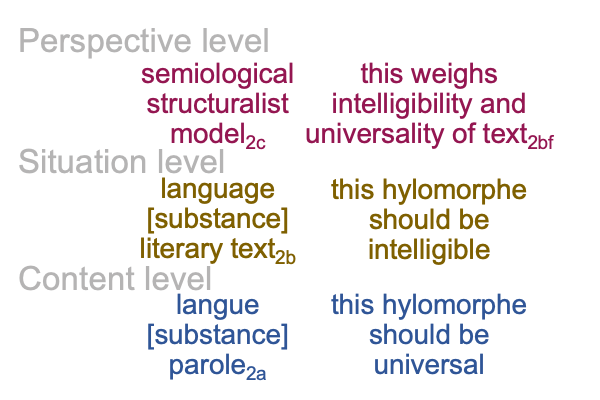
0160 So, the structuralist semiological model2c serves as some sort of judgment, what else?
The structuralist model2c (to some degree) stands for the literary text2af (as the noumenon) in regards to the Literary Positivist’s judgment.
Consequently, the structuralist model2c of a literary text2bf may substitute for the noumenon. Then, the model (standing in for the noumenon) [can be objectified as] its phenomena1c (when the text is regarded through the lens of signifier and signified1a and the laws of the system1b).
0161 The result?
The semiological structuralist model2c serves as a conduit, shifting the literary text2bf from a substitute noumenon (in firstness) into something that has been refurnished2a (within secondness, so to speak) in order to entangle the literary positivist intellect3a and exploit its potential1a.
0162 Here is a picture of the embodiment of this confounding.
